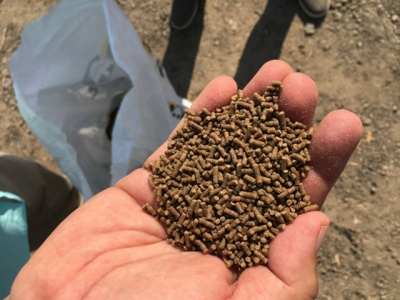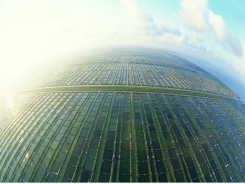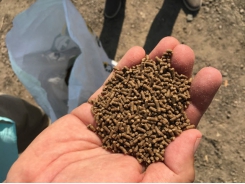Least-cost formulation software in shrimp aquafeed production - Part 2

5/ Managing formulation effectiveness
For least-cost feed formulation software to be efficiently used, it should offer several basic features applicable to the targeted species. The results of feed formulation are based on the data entered by the user and the final formula will only be as accurate or cost-efficient as the data input.
Feed formulation software provides a way of entering data on the ingredients available for formulation into the software program. Available feed ingredients must be listed along with their cost per unit price. Depending on the software being used, optional ingredient properties also can be entered, including ingredient types, alternate code names, applicable species and others.
Specifications must be given for each formula to be solved by the least-cost formulation software. Formula specifications are defined by the nutrient requirements or constraints and by the ingredient limits. In each case, the formulator specifies either a lower limit and/or an upper limit for each item in the formula.
The values for nutrient compositions are preferably known from a priori chemical analysis results of a representative sample of the ingredient. When not available, relevant published tables of feed composition using average or typical values may be used instead.
Once all the necessary information is provided, the feed formulation software will produce formulas that will meet the desired specifications at the lowest possible cost. A requirement for proper formulation, however, is that the formula result must be feasible both from a mathematical and a nutritional standpoint. If impractical results are obtained, the ingredient and nutritional composition should be carefully checked and reviewed to make sure the solution is nutritionally acceptable for the targeted species.
6/ Selection of ingredients
One of the most important uses of least-cost feed formulation is in the decision making to select among the ingredients available ingredients to be used, based on their nutritional composition and cost. Often one ingredient can be substituted for another with the similar nutritional value, and this can be helpful if market conditions favor the use of one ingredient over others to achieve the highest profit margin while still maintaining sound nutritional viability. In addition, the following concepts are important in the analysis of the formulation results.
Shadow prices
By subtracting the marginal cost change from the current ingredient cost the resulting cost is called the shadow price of the ingredient. This amount represents the cost of the ingredient at which the ingredient can be included in the formula. Ingredients that are included in the formula results have a shadow price of zero. Similarly, the change in formula cost with a change in a nutrient restriction is called the shadow price of the nutrient. In a least-cost feed formulation, the shadow price of a nutrient is zero if the level of nutrient use is not equal to the constraint level.
Marginal price changes
For those ingredients that were not included in the formula solution; the least-cost formulation software can indicate how much the cost of these ingredients will have to fall before they can be included in the formula. This cost change is called the marginal price change of the ingredient.
Parametric price changes
An important analytical use of least-cost feed formulation software is to observe the impact of changing ingredient prices in the formula solution. This allows the user to determine how much of an ingredient would be used if the ingredient were available at a different price. To carry out this analysis, the ingredient price can be adjusted and recalculations done as many times as necessary. Some feed formulation software allows the generation of summary graphs called price maps, which are the result of plotting the formula costs at different ingredient prices.
Nutrient factoring
The ability to specify that several nutrients must be present in the resulting formula in relation to one another is referred to as “nutrient factoring.” Advanced least-cost feed formulation software provides this capability which allows setting a ratio between two nutrients. The ability to change nutrients in proportion to one another is useful to the user because of the way samples of the same ingredient differ. For example, the user can specify that nutrients such as Arginine, Histidine and Isoleucine be proportional to the total amount of protein in the formula.
Optimum density
This refers to a technique of least-cost feed formulation that tries to formulate with specific proportions among nutrients by relaxing the weight constraint of the formula, based on the theory that animals will consume feed to maintain a constant energy intake regardless of the energy level of the feed.
Multi-blending
Feed formulators sometimes have to decide based on having limited amounts of some ingredients. An advanced feature of some least-cost feed formulation packages is multi-blending, which allows more than one formula to be solved at once while considering the ingredients that are available in limited qualities. The program calculates which formulas must use the scarce ingredients in order to achieve total least-cost solution.
7/ Perspectives
For many years, manufacturers of commercial aquafeeds balanced feed formulations for their animals by using tedious trial and error methods which compromised nutritional quality and lead to lost profit potential. The use of feed formulation software has helped aquafeed formulators design feeds that maximize nutritional content for their species while lowering costs in order to increase profits.
The aquaculture industry shares many of the same issues as other animal practitioners but it has some very unique challenges regarding feed formulation that must be taken into consideration. It is vital to remember that, as with any software, the end product is only as good as the data with which it was formulated.
The use of software technology has greatly improved both animal nutritional health and practitioner profitability. Additional advances in nutritional knowledge and manufacturing technology, as well as novel ingredients, will make this technology increasingly important.
Có thể bạn quan tâm
Phần mềm

Phối trộn thức ăn chăn nuôi

Pha dung dịch thủy canh

Định mức cho tôm ăn

Phối trộn phân bón NPK

Xác định tỷ lệ tôm sống

Chuyển đổi đơn vị phân bón

Xác định công suất sục khí

Chuyển đổi đơn vị tôm

Tính diện tích nhà kính

Tính thể tích ao hồ




 Development of new and real-time PCR for detection…
Development of new and real-time PCR for detection…  From the micro to the macro: probiotics and…
From the micro to the macro: probiotics and…